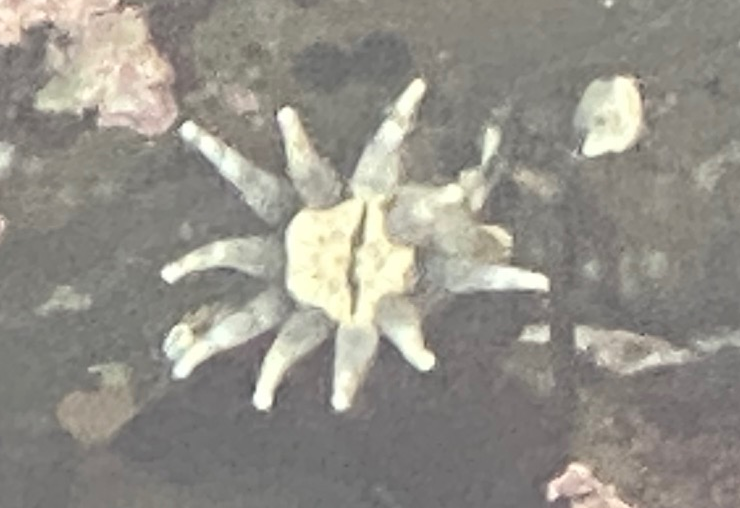By Dr. Tom Niesen
One of our FMR tidepool naturalists found this star-shaped animal among the fine gravel on the bottom of a tidepool and asked for an identification. I was first thrown off by the star pattern in the photograph and sent the image to Dr. Rebecca Johnson, co-director of the citizen scientist program at California Academy of Sciences. She had encountered the animal in the local rocky intertidal and had identified it as the anemone Halcampa decatentaculata, the 10 tentacle burrowing anemone.
This anemone is cylindrical, about 2 inches in length and a half inch in diameter. One end, called the aboral or pedal disc, has a bulbous projection, and the other end, known as the oral disc, has a central opening, the pharynx, which is surrounded by a ring of 10 tentacles. The pharynx extends the length of the column and ends in the blind gut known as the coelenteron.
The tentacles extend out over the surface and are capable of feathery elongation or chunky retraction using typical cnidarian hydraulics. Unlike most sea anemones, Halcampa does not anchor itself to a solid substrate, but instead uses its aboral end to burrow down into soft substrates, like gravel or sand, or into the holdfasts of kelp or surf grass.

